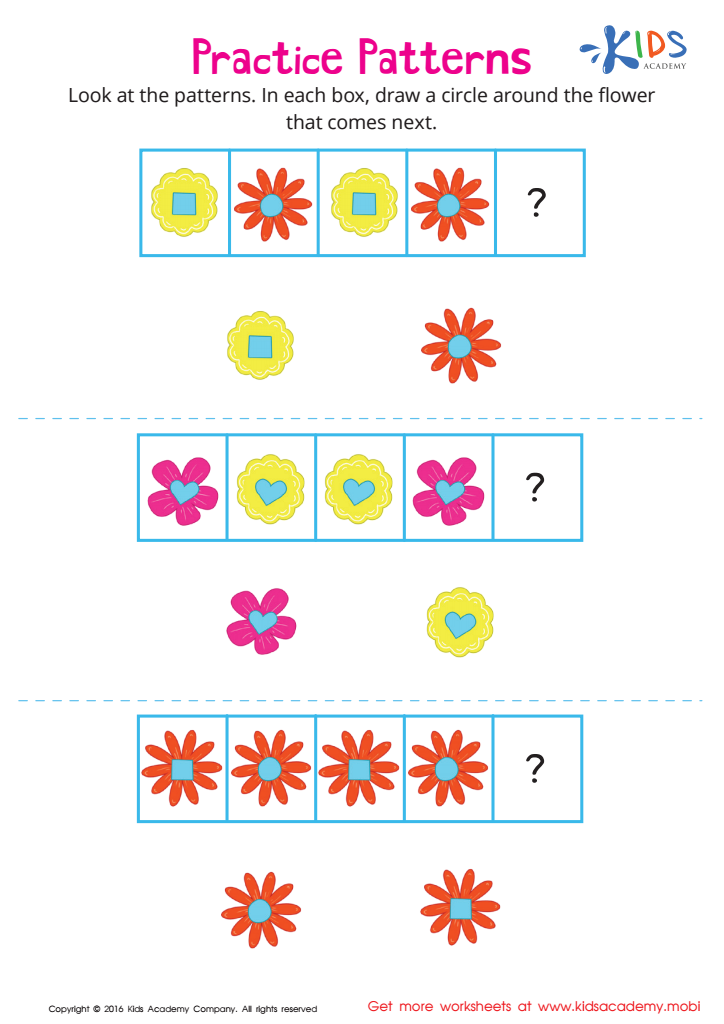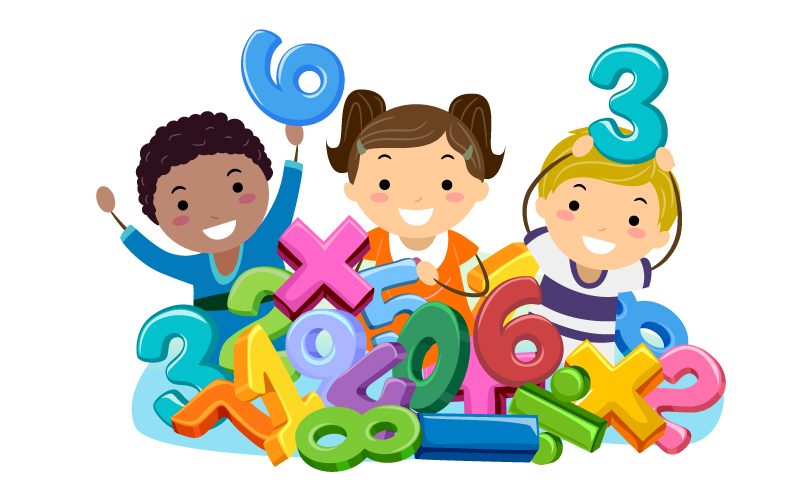Normal Patterns Worksheets for Ages 5-8
5 filtered results
-
From - To
Discover engaging Normal Patterns worksheets designed for children aged 5-8! Our interactive resources help young learners grasp essential math skills through fun pattern activities. These worksheets promote critical thinking and reinforce understanding of sequences in colors, shapes, and numbers. Ideal for home or classroom use, they foster creativity while enhancing cognitive development. Teachers and parents can easily integrate these activities into lesson plans or daily routines. With a variety of exercises tailored to different skill levels, kids will build confidence and mastery in recognizing and creating patterns. Start your child’s educational journey by exploring our comprehensive collection today!
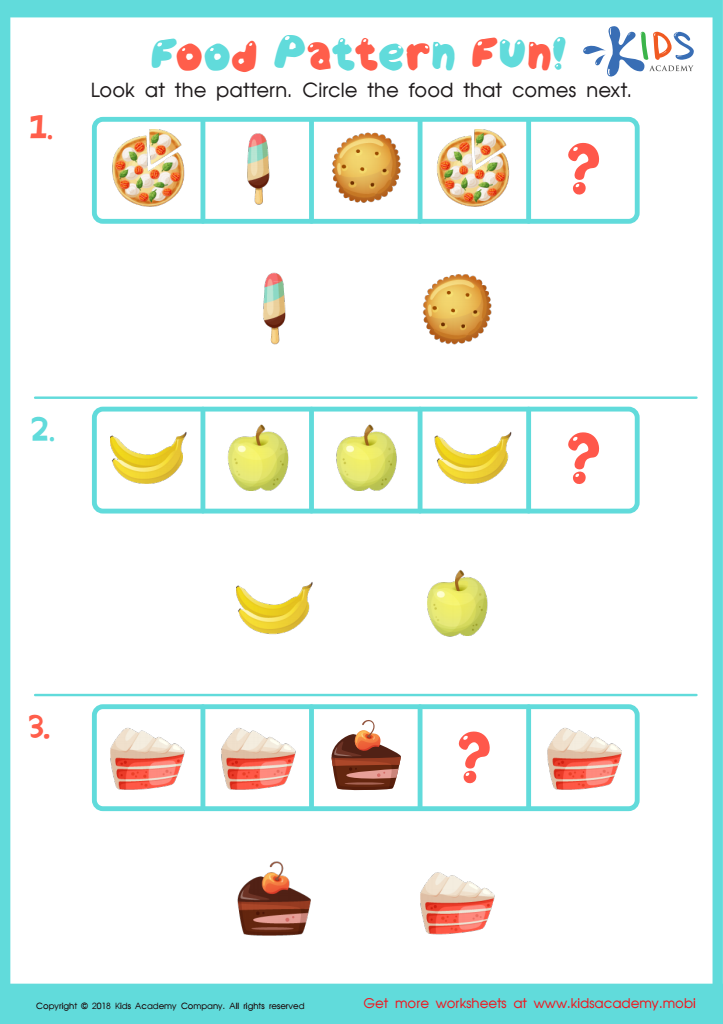

Food Pattern Fun Worksheet
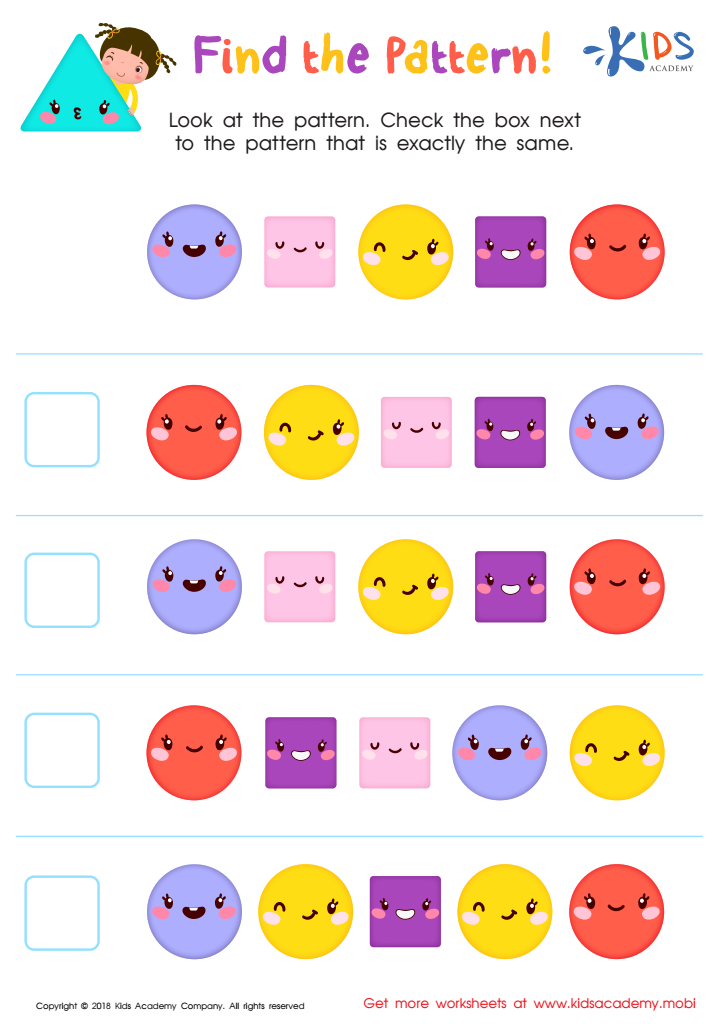

Find the Pattern Worksheet
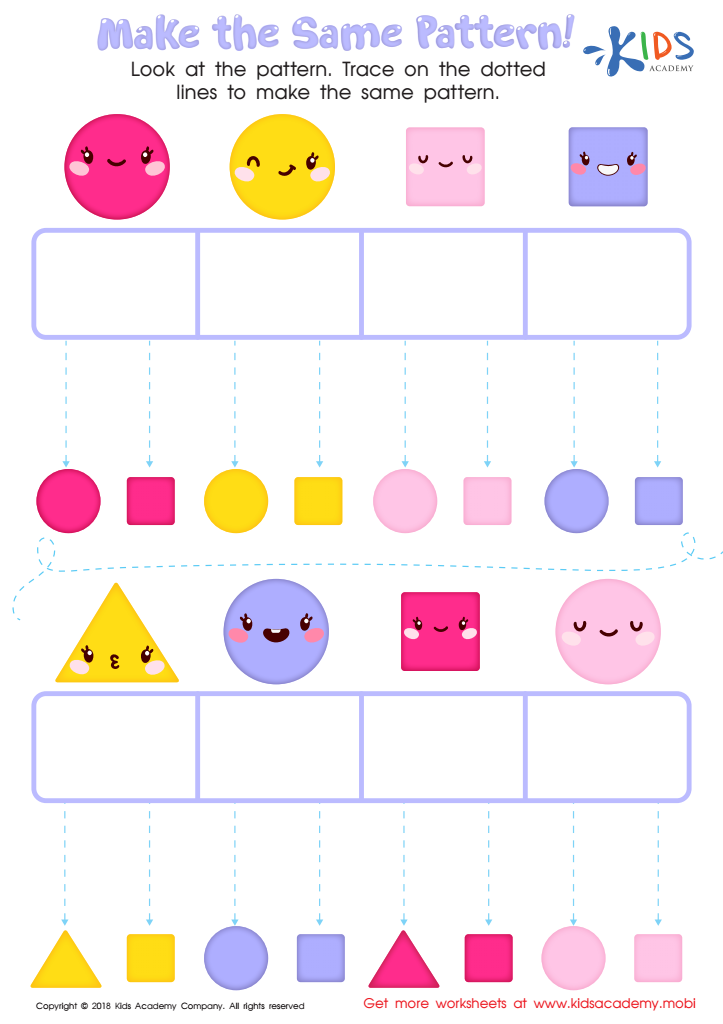

Make the Same Pattern Worksheet


Shape Pattern Fun Worksheet
Understanding normal patterns of development for children aged 5-8 is crucial for both parents and teachers as it plays a significant role in fostering a child's overall growth. This developmental stage is pivotal, marked by significant cognitive, social, emotional, and physical advancements.
Parents should care because recognizing these patterns helps them set realistic expectations for their child’s behavior and capabilities, allowing them to celebrate milestones and support growth without undue pressure. Awareness of these patterns enables parents to notice signs of potential developmental concerns early on, facilitating timely interventions and support that can chart a more positive developmental trajectory.
For educators, knowledge of developmental norms is essential to create effective, age-appropriate curricula and learning experiences. It aids in tailoring instruction to meet diverse learning styles and needs, ensuring that each student feels included and can thrive. Furthermore, understanding these patterns assists teachers in creating a socially enriching environment where children can develop essential collaboration and communication skills.
Ultimately, being attuned to developmental norms equips both parents and teachers with the tools to nurture children more effectively, fostering a solid foundation for their emotional, social, and intellectual capabilities as they navigate through these formative years.
 Assign to My Students
Assign to My Students
